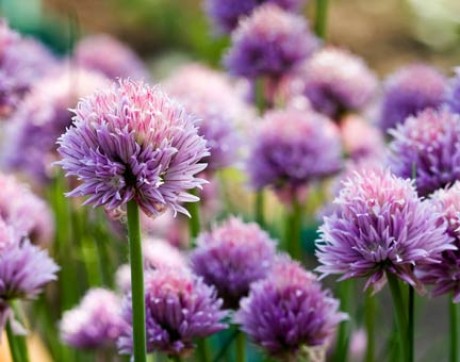Grow A Delicious Landscape
By John Bruce

Grow a delicious landscape
Replace a strictly ornamental plant with one that is edible, or try incorporating annual and perennial herbs and vegetables into an already existing landscape
Once gardens were planted out of sight for aesthetics, but the resurgence of a trend to use edible plants as ornamentals is reshaping the face of gardening. Planting produce in front yards and along walkways adds convenience and accessibility.
Simply put, edible landscaping puts food-producing ornamental plants in the home landscape. Most edible plants need well-drained soil and a minimum of six hours in full sun daily, but some tolerate partial shade. Make sure you pick the proper location.
Nasturtium, Jerusalem artichokes, Swiss chard, chives and daylilies are a few examples of commonly grown ornamental plants that double for attractive landscapes and the dinner table.
Four tasty recipes
Here are four examples of tasty landscaping plants and recipes:
Nasturtium Salad Dressing
Often described as a plant to deter squash bugs, beetles and aphids, nasturtium is an annual or perennial flowering plant. Its attractive, edible flowers and leaves are eaten in salads and dressings.
1 cup mayonnaise
2 tablespoons lemon juice
2 tablespoons honey
1 tablespoon salad oil
¼ teaspoon dry mustard
4 nasturtiums flowers
Nasturtium leaves
Pinch curry powder
Place all ingredients in blender for 45 seconds. Makes 1½ cups.
Sautéed Swiss Chard
Fresh, young chard can be used raw in salads. Mature chard is typically sautéed. Bitterness in the leaves and stalks fades with cooking. Its refined flavor is more delicate than spinach.
1 bunch Swiss chard
3 tablespoons virgin olive oil
3 cloves garlic, minced
1 8-ounce can tomato sauce
Salt and pepper
Wash chard and remove stems. In a skillet, sauté garlic in olive oil. When garlic turns golden, add Swiss chard and sauté until wilted. Add tomato sauce and simmer 10 minutes. Salt and pepper to taste.
Asiago-Chive Biscuits
The violet blossoms of chives add a splash of color to any landscape. Chopped chive leaves are a delicate condiment for soups and other dishes, and the round tufted flowers are used as garnishes whole and broken apart in salads, cooked vegetables and casseroles. Regular picking encourages repeat blooms.
2 cups biscuit mix
²⁄³ cup 2 percent or skim milk
¼ cup melted butter
¾ cup grated Asiago cheese
½ cup finely chopped fresh chives
Toss ingredients in a large bowl. Turn out onto a floured surface. Roll to 1-inch thick. Cut into 12 squares. Space apart on a cookie sheet and bake at 400 degrees for 12 to 15 minutes.
Stuffed Daylilies
Not to be confused with true lilies, daylilies grow from tuberous, fleshy roots rather than bulbs. Daylilies have been eaten for centuries in Asia where they originated. The tuber-like roots can be eaten raw or added to salads, soups and stews. The flavor is similar to asparagus. The buds and blossoms are the sweetest parts. Raw or boiled, stir-fried or steamed, they can be eaten with other vegetables. With their savory taste and gelatinous consistency, the blossoms add a flowery zest to soups and vegetable dishes.
1 cup diced cooked chicken
¼ cup mayonnaise
1 3-ounce package cream cheese (softened)
¼ cup diced celery
½ teaspoon lemon zest
2 teaspoons ranch dressing
Mix well. Fills approximately 8 large or 12 small daylily blossoms.
-
Share this story:


